Since the enamel of permanent teeth is slightly transparent, the yellowish colour of the underlying dentine is shown through it. Therefore, permanent teeth will appear slightly yellowish. As we get older, the dentine increasingly grows thicker, and it is normal that our teeth become more yellowish.
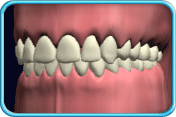 Slightly yellowish permanent teeth
Slightly yellowish permanent teethThe enamel of deciduous teeth is not as transparent as our permanent teeth. That is why deciduous teeth look milky white.
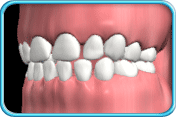 Milky white deciduous teeth
Milky white deciduous teethThere are two factors causing tooth discoloration — internal factor and external factor.
External factors causing tooth discoloration
Brown and black stains on the surface of teeth
 Teeth with black stains
Teeth with black stainsCause
Drinking of dark-coloured beverages, such as tea, result in the food colours being adsorbed onto the tooth surfaces.
Treatment
The dentist will use:
Prophyjet — utilizing air to spray a mixture of fine baking soda powder and water onto the surfaces of teeth to remove stains.
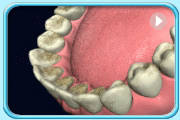 Prophyjet cleaning
Prophyjet cleaning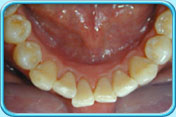 Teeth after black stain removal
Teeth after black stain removalPrevention
Avoid drinking dark-coloured beverages to minimize food colours being adsorbed.
Green and orange stains at the surface of teeth
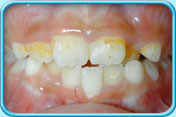 Teeth with orange stain
Teeth with orange stainCause
Teeth has not been cleaned thoroughly, and the accumulated dental plaque contained bacteria or fungi that can produce colour and formed green and orange stains.
Treatment
Dentist will perform scaling to remove accumulated dental plaque and stains.
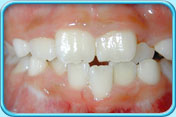 Teeth after orange stain removal
Teeth after orange stain removalPrevention
Brush the teeth every morning and before bed at night, and use dental floss to remove dental plaque to keep the teeth white.
Internal factors causing tooth discoloration
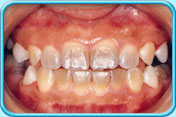 Teeth appear to be greyish-blue to brownish-yellow
Teeth appear to be greyish-blue to brownish-yellowCause
If there was certain sickness or, if tetracycline (a kind of antibiotics) is taken during the development of teeth, the teeth formed will be greyish-blue to brownish-yellow.
Treatment
Teeth appear to be greyish-black
Cause 1
Tooth decay
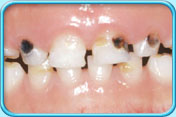
Treatment
The dentist removes the tooth decay, and then puts on a filling
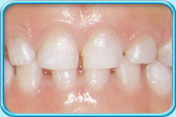
Cause 2
Pulp necrosis
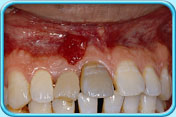
The pulp becomes necrotic because of tooth trauma or tooth decay, and the tooth will appear greyish-black.
Treatment
Endodontic treatment must be done to treat the discoloured tooth which has pulp necrosis.
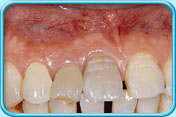 Tooth after root canal therapy
Tooth after root canal therapyIf teeth still appear greyish-black, dentist can treat the discoloured teeth by bleaching, laminate veneer or crown.
Brownish-yellow or white patches at the surface of a tooth
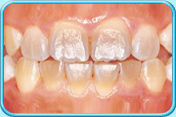
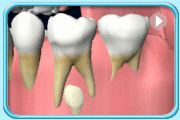
Treatment
Early tooth decay
Dentist can apply topical fluoride onto the surfaces of teeth so that the early tooth decay lesion can be remineralised.
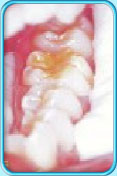
Disturbance during the development of a tooth or Fluorosis
Treatments such as Filling, Laminate veneer or Crown.
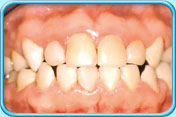 Tooth after filling
Tooth after filling